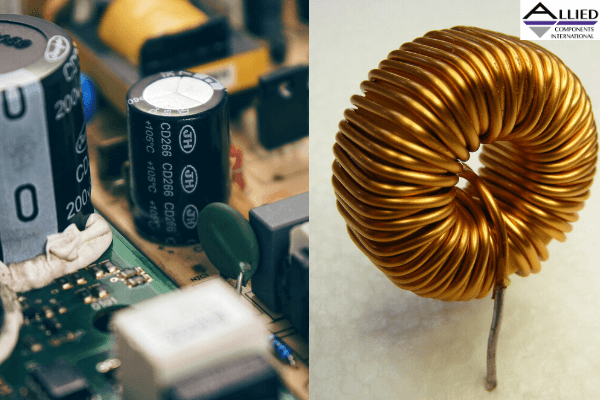Understanding the Differences Between Capacitors and Inductors

Two of the most widely used electronic components are capacitors and inductors. Both are designed to store energy and function as temporary energy sources, but what makes them different? Here's a comparison between capacitors and inductors.
Capacitors and Capacitance
Capacitors and inductors are often used in power networks, filters, and circuits where voltage requires regulation. The main purpose of a capacitor is to provide a specific amount of capacitance, which is a state that exists when a conductive material is insulated. The value of this state is measured in farad or coulombs per volt. The separation between conductive material and insulation allows for energy to be stored in an electric field.
Proper capacitance value matching is needed when deciding to purchase a new capacitor. Note that capacitance is an essential consideration in circuit design since it affects how current changes in the charging and discharging processes. The more capacitance the unit allows, the more charge it can store per amount of voltage.
Also Read - Different Types of Capacitors: An Overview
The term "charging" relates to a capacitor gaining energy, while "discharging" is the action in which a capacitor provides energy. A capacitor is charged when electrons flow into it from a battery. Once the capacitor is charged to a certain level, it can act as a voltage source if connected with a resistor. Energy stored in the electric field can convert accumulated charge into electric current.
Also Read - Understanding Capacitor Leakage Current and How to Reduce It
Inductors and Inductance
A major difference between a capacitor and an inductor is that a capacitor stores energy in an electric field while the inductor stores energy in a magnetic field. Another function that makes an inductor different is that when it's connected with a voltage source, its current steadily increases while the voltage dissipates at a similar rate. A capacitor during the charging process, on the other hand, has rising current while voltage declines.
Also Read - How to Buy Capacitors: Important Things You Should Consider
Inductance, measured by henry rating, reflects the amount of voltage delivered by an inductor due to the rate of charge movement through the unit. In an inductor, the rate of charging is affected by the RL time constant, which is the result of multiplying inductance by resistance in series with the inductor. Meanwhile, charging a capacitor is influenced by the RC time constant. Ultimately, voltages and currents vary according to time in a capacitive or inductive circuit.


